Abdallah Alabdallah
CoxSE: Exploring the Potential of Self-Explaining Neural Networks with Cox Proportional Hazards Model for Survival Analysis
Jul 18, 2024Abstract:The Cox Proportional Hazards (CPH) model has long been the preferred survival model for its explainability. However, to increase its predictive power beyond its linear log-risk, it was extended to utilize deep neural networks sacrificing its explainability. In this work, we explore the potential of self-explaining neural networks (SENN) for survival analysis. we propose a new locally explainable Cox proportional hazards model, named CoxSE, by estimating a locally-linear log-hazard function using the SENN. We also propose a modification to the Neural additive (NAM) models hybrid with SENN, named CoxSENAM, which enables the control of the stability and consistency of the generated explanations. Several experiments using synthetic and real datasets have been performed comparing with a NAM-based model, DeepSurv model explained with SHAP, and a linear CPH model. The results show that, unlike the NAM-based model, the SENN-based model can provide more stable and consistent explanations while maintaining the same expressiveness power of the black-box model. The results also show that, due to their structural design, NAM-based models demonstrated better robustness to non-informative features. Among these models, the hybrid model exhibited the best robustness.
Explainable Predictive Maintenance
Jun 08, 2023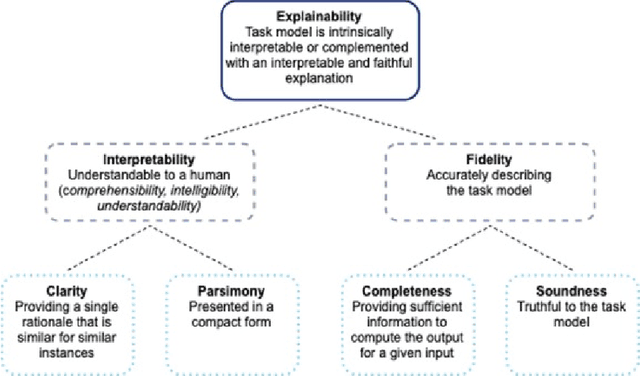

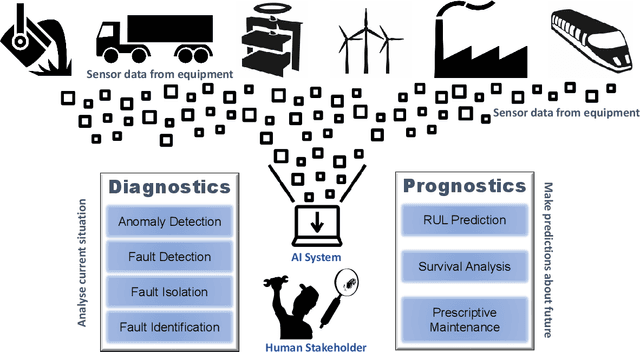
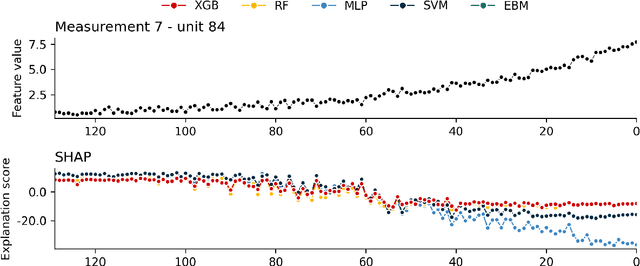
Abstract:Explainable Artificial Intelligence (XAI) fills the role of a critical interface fostering interactions between sophisticated intelligent systems and diverse individuals, including data scientists, domain experts, end-users, and more. It aids in deciphering the intricate internal mechanisms of ``black box'' Machine Learning (ML), rendering the reasons behind their decisions more understandable. However, current research in XAI primarily focuses on two aspects; ways to facilitate user trust, or to debug and refine the ML model. The majority of it falls short of recognising the diverse types of explanations needed in broader contexts, as different users and varied application areas necessitate solutions tailored to their specific needs. One such domain is Predictive Maintenance (PdM), an exploding area of research under the Industry 4.0 \& 5.0 umbrella. This position paper highlights the gap between existing XAI methodologies and the specific requirements for explanations within industrial applications, particularly the Predictive Maintenance field. Despite explainability's crucial role, this subject remains a relatively under-explored area, making this paper a pioneering attempt to bring relevant challenges to the research community's attention. We provide an overview of predictive maintenance tasks and accentuate the need and varying purposes for corresponding explanations. We then list and describe XAI techniques commonly employed in the literature, discussing their suitability for PdM tasks. Finally, to make the ideas and claims more concrete, we demonstrate XAI applied in four specific industrial use cases: commercial vehicles, metro trains, steel plants, and wind farms, spotlighting areas requiring further research.
The Concordance Index decomposition: a measure for a deeper understanding of survival prediction models
Mar 02, 2022
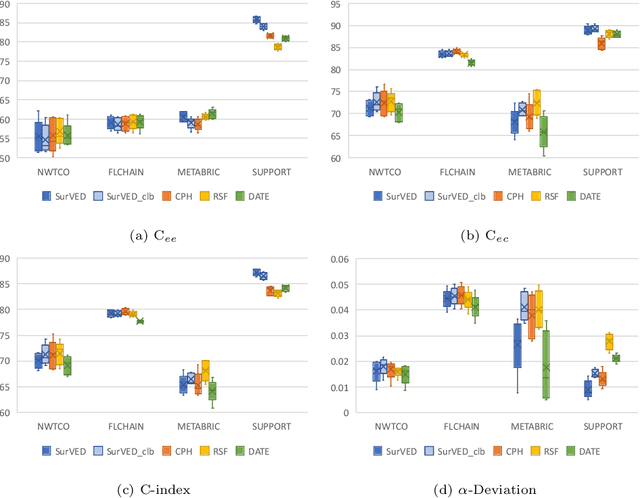
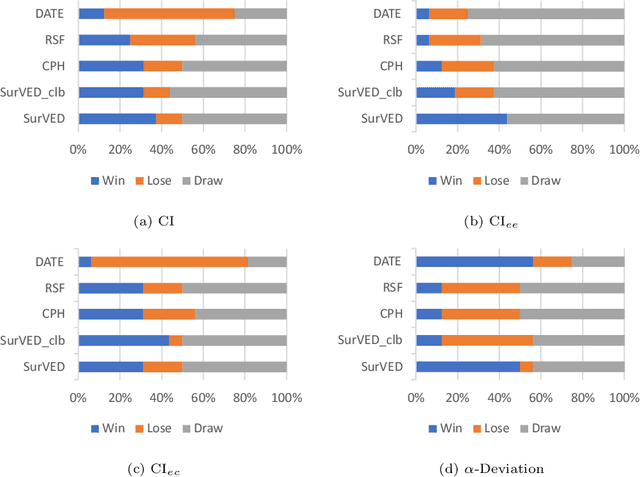

Abstract:The Concordance Index (C-index) is a commonly used metric in Survival Analysis to evaluate how good a prediction model is. This paper proposes a decomposition of the C-Index into a weighted harmonic mean of two quantities: one for ranking observed events versus other observed events, and the other for ranking observed events versus censored cases. This decomposition allows a more fine-grained analysis of the pros and cons of survival prediction methods. The utility of the decomposition is demonstrated using three benchmark survival analysis models (Cox Proportional Hazard, Random Survival Forest, and Deep Adversarial Time-to-Event Network) together with a new variational generative neural-network-based method (SurVED), which is also proposed in this paper. The demonstration is done on four publicly available datasets with varying censoring levels. The analysis with the C-index decomposition shows that all methods essentially perform equally well when the censoring level is high because of the dominance of the term measuring the ranking of events versus censored cases. In contrast, some methods deteriorate when the censoring level decreases because they do not rank the events versus other events well.
 Add to Chrome
Add to Chrome Add to Firefox
Add to Firefox Add to Edge
Add to Edge